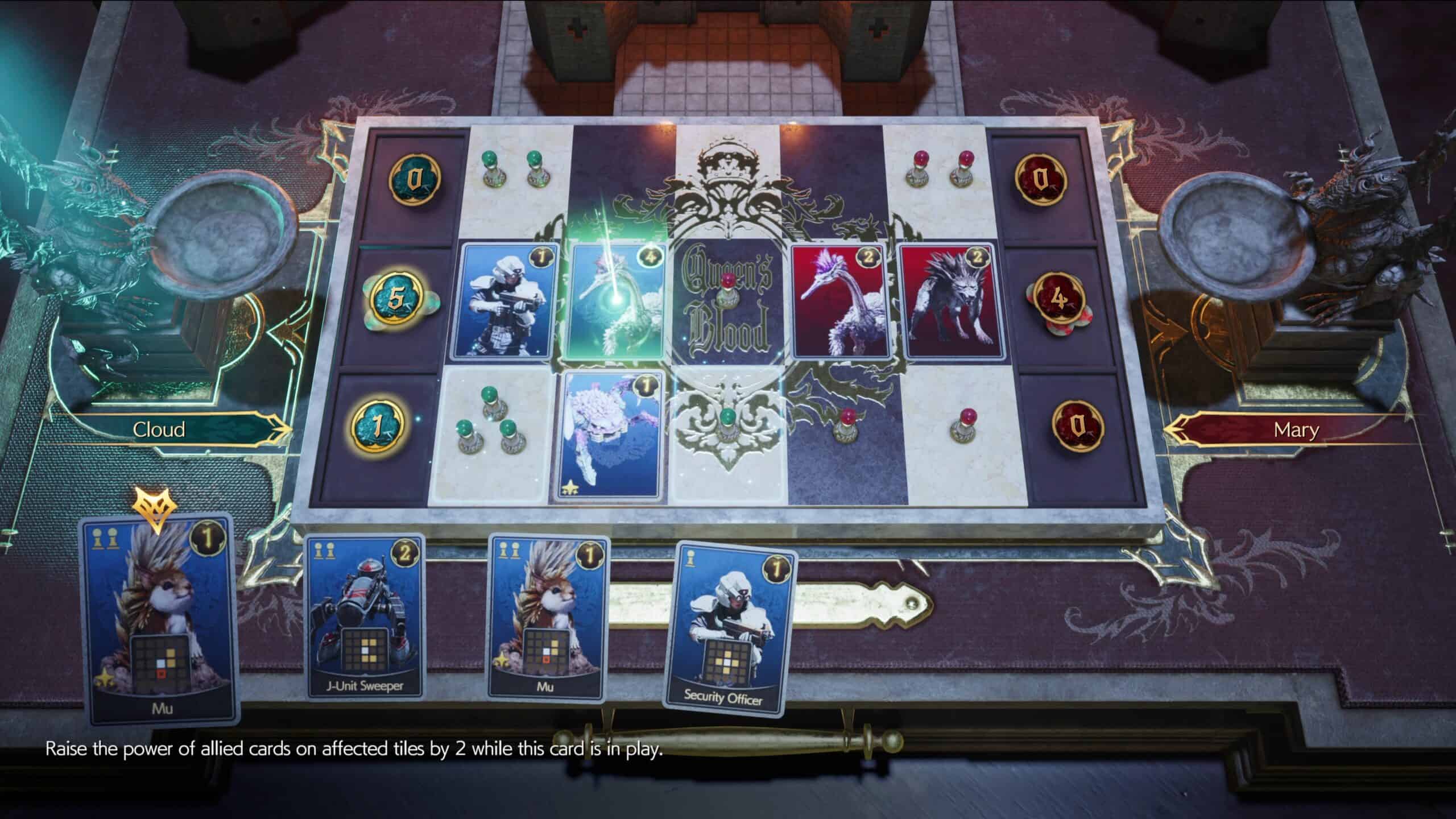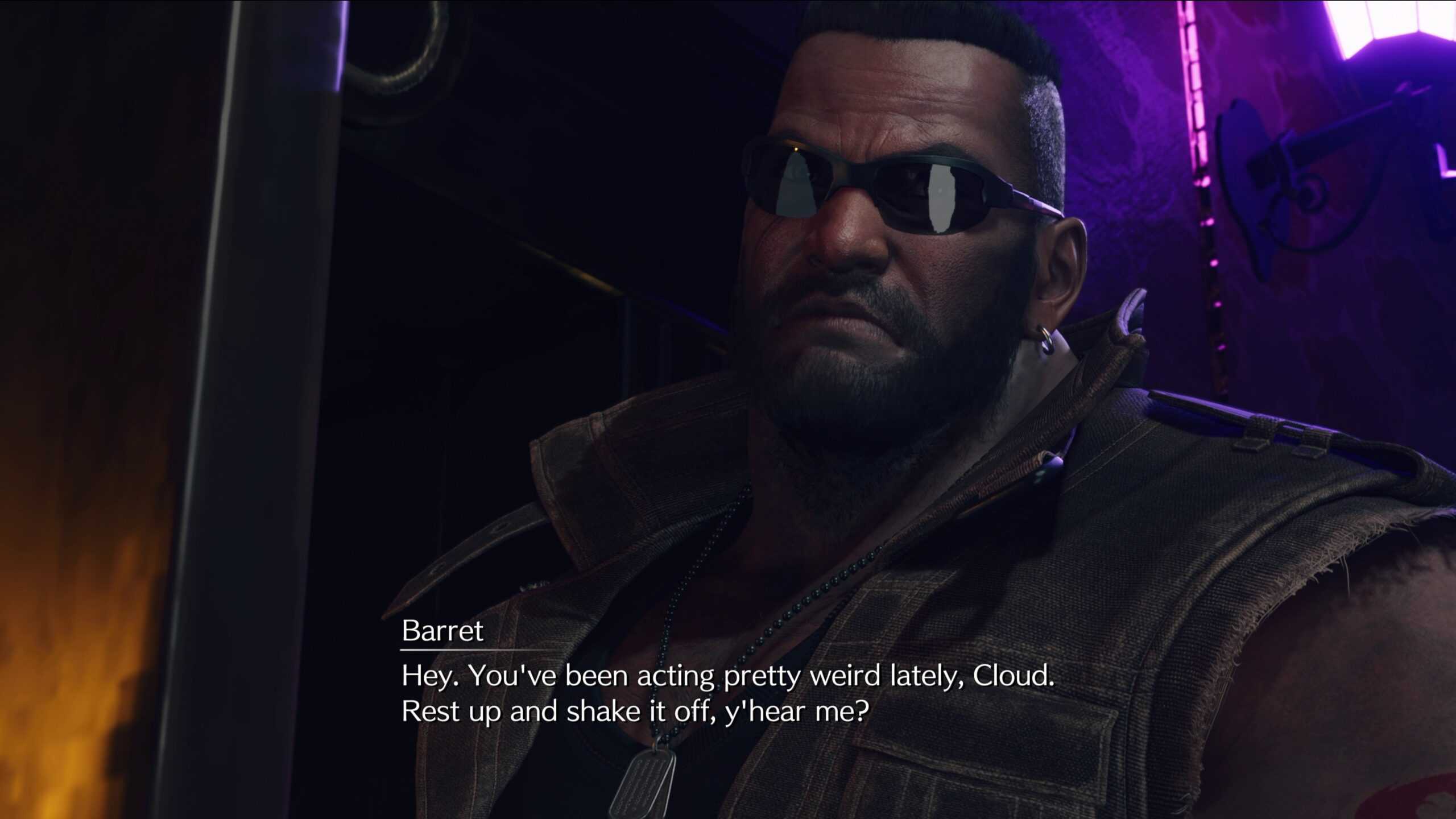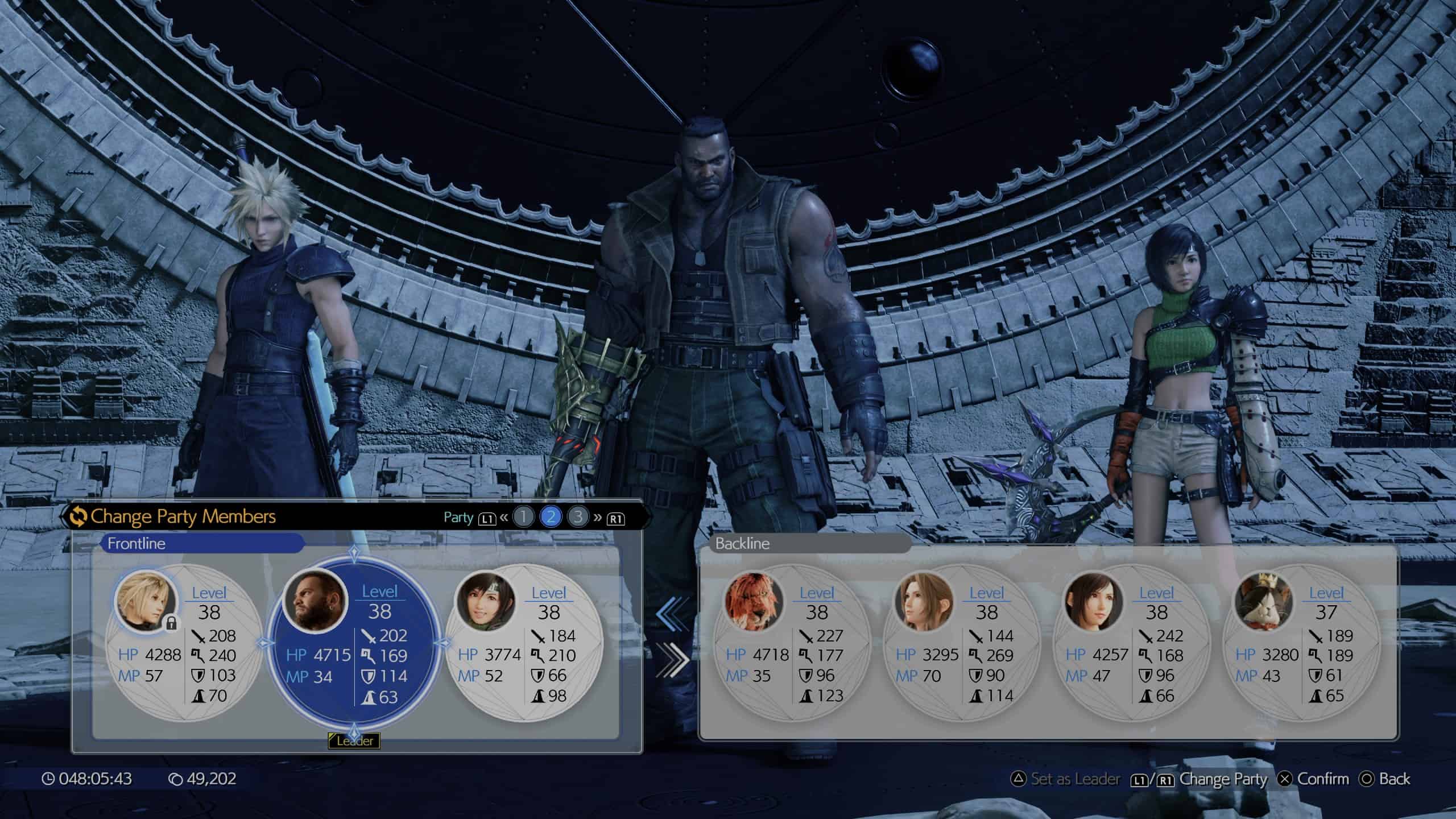Download Final Fantasy VII
My relationship with the last few installments of the Final Fantasy franchise has been pretty much a rollercoaster ride. I really enjoyed my time with Final Fantasy XIV: A Realm Reborn and its subsequent expansions. Thought Final Fantasy XV was a letdown. Despite its technical issues on PS4 for the original release, I absolutely loved Final Fantasy 7 Remake, and then last year, I wrote about how Final Fantasy XVI was a disappointment and didn’t live up to the standard or felt like a proper Final Fantasy game. Following that trend, I knew I was in for a great time with the release of Final Fantasy 7 Rebirth, the second part of the Remake project trilogy.
I can confidently say that my prediction was correct, and Rebirth not only lives up to the hype but delivers such a fun and high-quality package that I would very much like to see it in the race for GOTY contenders. Albeit there might be a bit of bias in there, after all, like a lot of Final Fantasy fans, my journey with the franchise actually began in the world of the original Final Fantasy VII.
Although, in my case, it was a double package of the animated movies Spirits Within and Advent Children (yeah, yeah, I know, not the best claim to fame). Seeing Advent Children enticed me to dive deeper into the world of Final Fantasy VII, and from there, I explored all the other games in the franchise. So Square Enix’s seminal RPG basically introduced me to the entire franchise.

Amazing 2nd installment of the trilogy aside, Final Fantasy 7 Rebirth is, however, not without its flaws. While the overall sum package is everything I expected and more, some of the parts that make it up have some pretty glaring issues that were present in the FF7 Remake as well and it is baffling how those still ended up here despite the negative reception they received the first time around. I will be discussing these small negative things first before I move on to what makes Rebirth a GOTY contender.
This is something that I mentioned in my Final Fantasy 16 review as well, but it pains me to see how low-effort some things are visually. Despite being PS5 exclusives, both XVI and now Final Fantasy 7 Rebirth don’t seem to be all that interested in making an impression when it comes to visual fidelity. The games don’t look bad by any means, but that has more to do with the stellar art design, something that the Final Fantasy franchise has always excelled at.
The technical performance of Final Fantasy 7 Rebirth might be great, but when it comes to the visuals, it is baffling how we seem to be still stuck with the low-quality textures and pop-ins akin to the first release of Final Fantasy 7 Remake. There are countless instances when two rocks side by side would look as if one is from the PS4 era while the other one harkens back all the way to PS2 days with its low-quality textures that basically just come off as smears.
While those issues were mostly fixed 2 years later when the FF7 Remake Intergrade came out, if this trend is something that Square Enix is going to follow with all these games and Rebirth will also get its textures fixed after 2 years then it doesn’t paint a good picture of their quality control. On top of that, the 60 FPS performance mode is borderline unplayable. Despite running at slightly above 1080p, the upscaling used in it to take the game up to 4K presentation makes the game a blurry mess.

One issue that I had with the design of side content in FF7 Remake was that it was mostly just pointless fetch-style side quests to pad the game length. Unfortunately, Final Fantasy 7 Rebirth doesn’t do much to improve that.
In fact, it being an open-world game actually results in it falling into the typical open-world bloat that can be expected from most games these days. Clear out map markers to unlock fast travel points, activate towers to reveal other activities, unlock modes of transportation every time you enter a new region through a stealth mini-game, etc. FF7 Rebirth has all these things. Of course, everyone’s mileage with this type of side content will vary, but I wasn’t a big fan of this.
Since I mentioned mini-games, their prevalence in FF7 Rebirth is also something I wasn’t a big fan of. Sure, mini-games are the bread and butter of the Final Fantasy franchise, but I should have the freedom to engage with them how I want instead of the game forcing them on me at what are supposed to be critical story junctions where time matters.
Being forced to ensure a certain score at such moments in the story just feels off and seemed like an excuse to extend the game’s length, the same way Remake extended the 6-7 hours of Midgar section from the original to a 30-hour game.
A perfect example of this is the Dustbowl section of Rebirth. I don’t enjoy card games. Was never a fan of Gwent in The Witcher 3, and besides the intro section of Queen’s Blood in FF7 Rebirth, I had no intention of playing that mini-game any further.

Now imagine my surprise when the game forces me to go up against three high-ranked Queen’s Blood players when I have been ignoring that mini-game since the start and don’t have any decent cards. Since this is part of the main story mission, I have to defeat those NPCs to progress in the game. While I managed to do that after a few attempts, such forced experiences are something I don’t enjoy, and I felt this was unnecessary in Final Fantasy 7 Rebirth.
However, despite the negatives I have mentioned above, my 70 hours with Final Fantasy VII Rebirth were an incredibly amazing experience in terms of storytelling and overall world-building. If you have played and remember the conclusion of Remake and INTERmission, you know how the remake trilogy is trying to branch out by creating a separate timeline experience, one where Zack Fair is alive. With the Whispers defeated at the end of Remake, Rebirth was set to deliver an experience that would be new and shocking even for those well versed with the storyline of the OG FF7.
Unfortunately, as much as I would have liked for Rebirth to fully commit to a new timeline narrative, it doesn’t do too much to deviate from the old experience. Opting instead to keep both timelines in place and have their stories run in parallel.
Since this is the 2nd part of the remake trilogy project, Final Fantasy VII Rebirth basically serves as a world-building junction between FF7 Remake and whatever the final game will be. As such, Rebirth focuses more on fleshing out its cast of characters and the world they inhabit instead of progressing too far into the main plot. Not every lingering question you will have from Remake will be answered in Rebirth, and you might end up with a lot more questions than before.

In fact, it isn’t until very late into the game that the main plot becomes a focus, and prior to that, each chapter of FF7 Rebirth just basically has your team going from one region to the next on a casual adventure (under the guise of chasing down Sephiroth) while further strengthening their bonds.
That being said, there is nothing bad about this world-building. After all, this kind of storytelling is pretty standard. You hook your audience with a strong intro, which Remake did, and then start developing the characters to make the players care more about them and understand them better as part of Act 2, which is Rebirth, before going all out in the 3rd Act, the final game of the Remake project. In fact, it does wonders for Rebirth, letting each character shine as well as expand on the lore of creatures and other elements that felt pretty much like an afterthought in the original Final Fantasy VII.
After all, the late introduction of Red XIII and Yuffie in Remake and INTERmission DLC didn’t really give them the time under the spotlight that they deserved. Final Fantasy VII Rebirth fixes that, and it feels like each chapter is focused on a certain character, making sure they are the highlight and players really care about them.
Even Cloud himself is a lot more fleshed out with really funny interactions with Yuffie (a standout of the game for me) and Red XIII and, at other times, thoughtful moments with Tifa or Barrett.

Upon further reflection, if you aren’t the patient kind or were not happy with the cryptic cliffhangers of Remake, it might actually be a better idea to let the entire trilogy finish and then play them all together for more story cohesion. But if you are okay with waiting and care more about the journey than the end, then Rebirth will deliver you that perfectly.
The excellent ATB-based combat system of FF7 Remake, a mash between the more tactical approach from the original and the action focus of the modern era, makes a return, but this time around, it feels even more robust and layered.
The Synergy Skills system from Episode: INTERmission is further fleshed out thanks to a bigger cast of party members and gets another addition in the form of devastating Synergy Abilities, basically an extra Limit Break that you can unleash by combining attacks with certain party members.
Since Synergy Abilities become available by first gaining Synergy points during combat, you are encouraged to diversify your moveset and make use of different party combinations instead of just sticking to regular attacks and Materia spells. Using a character’s Synergy Ability also improves their relationship with Cloud, so the relationship system works outside as well as within combat encounters.
As the party count is limited to only three characters (even though all the party members travel together unless for story reasons), you can create different party loadouts and then switch between them on the fly as long as you are out of combat. You don’t miss out on any story content or party banter, giving you more reasons to diversify your party and try different playstyles to truly appreciate the deep combat systems at display in FF7 Rebirth.

As I mentioned earlier, the open world of Final Fantasy VII Rebirth is not the best open-world design experience. Despite offering five regions to explore, the types of activities you end up doing in those areas are pretty much the same.
While most of the side quests (green icons) are great, focusing on deepening your relationship with a particular party member, the other activities, which are basically you doing open-world map marker stuff for Chadley, the Materia guy, end up becoming a painful slog. The new traversal system doesn’t help matters much either, as a lot of these areas are designed to be restrictive and can only be accessed through the region’s special chocobos.
Luckily, Rebirth’s excellent combat system becomes a saving grace. For example, analyzing all of the Lifesprings in a region reveals the location of that region’s “boss” creature, resulting in a fun combat encounter. Similarly, interacting and solving the puzzle of the Divine Crystals will allow you to face a weakened version of a Summon in Chadley’s Simulator and, as a result, unlock a higher-ranked summon Materias like Phoenix or Bahamut.
Ultimately, despite its open-world shortcomings and visual flaws, Final Fantasy 7 Rebirth sets the bar exceptionally high for the franchise and remakes in general. While expanding the lore of the original game in a much more meaningful way is a welcome addition, the game could have arguably done with a little less content to deliver a tighter narrative package. More isn’t always better, especially when that more is basically just you running around collecting points for Chadley.
